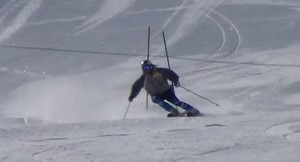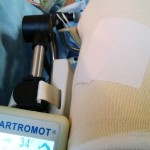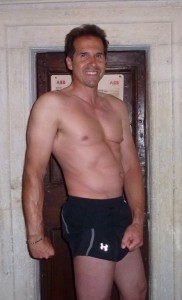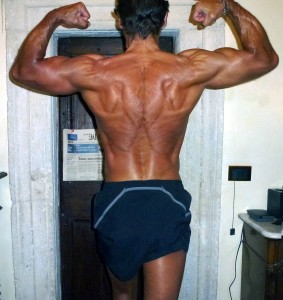Title: Burn The Fat SummerChallenge 2012: How I Have Succeed And Got “Most Ripped Man Over 50” Award. My Interview
By: Piero Maina
Word Count: 3.770
Here below you can read my interview released to Tom Venuto at Burn The Fat Inner Circle after my body transformation during the Burn The Fat Summer Challenge 2012. You also find my whole story and what I had to overcome to suceed. I hope my story will inspire some of you in order to take action toward a better body and a better health. Have a nice reading.
The Real Life Italian Stallion: Piero’s Journey to Become the Most Ripped Man Over 50
By Tom Venuto

To reach a ripped body fat level of 4.9% is a remarkable achievement for a man of any age. Piero Maina of Rome, Italy did it at age 50. Even more remarkable is what he had to overcome to achieve this…
For years, Piero has suffered from deep vein thrombosis (Paget-Schroetter Syndrome), which at times prevented him from lifting his arm over his head.
During all of the Burn the Fat Challenge contests he entered, Piero also had a tibia stress fracture, two broken ribs, sprained ankles, Morton’s Neuroma in both feet, and tennis elbow in both elbows and yet he never let it stop him.
If you want to learn the attitudes and strategies it takes not only to get very lean, but to overcome obstacles and become a champion, then this is the must-read interview of the year…
###
Tom: Piero, congratulations on your great results during the Burn the Fat challenge. We previously had categories for the most ripped and the most transformed over age 50. You were a contender for both of those awards and since the competition was so tight and we didn’t have runners up listed, we created a new award to acknowledge your achievement – the most ripped man over 50. We’re looking forward to hearing about your training and nutrition strategies, but first, could you tell us a little bit about yourself, where you’re from and what made you decide to do the Burn the Fat challenge.
Piero: Tom, first let me thank you for giving me the opportunity to share my experience in the Burn The Fat Challenge with everyone. It has been a phenomenal journey this year, but it wasn’t the first time. This was my third challenge.
Introducing myself, I am an Italian young man of nearly 51 years who lives in Rome – one of the most beautiful cities in the world. And of course, Italy is also known for the delicious food, particularly in this area. We could even say that in Italy, food is one of the main attractions. By the way, the Venuto surname sounds familiar to me, are your parents natives from Italy?
I’ve lived here with my wife since 1985 and we have two boys of 14 and 8. I’ve been an athlete all my life, playing several sports, but got my best results as a competitor in skiing, windsurfing, running, swimming and now I’m committed to golf. Obviously, I still train with weights and do cardio nearly every day (running, biking and swimming in summer time).
I decided to participate in the Summer Challenge for the first time three years ago, during my stay in Milan (600 km from Rome). The company where I worked for 26 years moved me there, putting huge stress on me, and then three days before the 2010 Challenge, my mom passed away. It wasn’t the best time to start, but I entered The Burn The Fat Summer Challenge anyway.
Tom: Thank you for the background, Piero and yes, my grandfather’s parents on my dad’s side came over from Aliano in Southern Italy, so I have the surname and there’s some Italian blood in me… So we’ve seen that you entered the challenge before and despite your hardships, you had very good results. But this time you took it to an all new level. Could you tell us about your results from this last Burn the Fat challenge – your change in body fat and lean mass. And what did you do to get in your best shape ever this time – did you fine tune your approach, train harder, diet stricter or do anything different?
Piero: It was a mix of everything you mentioned. I was also more dedicated and had a stronger desire to succeed. I purchased Burn the Fat, Feed the Muscle (BFFM) in 2005, but due to physical problems and limiting beliefs, I never started. I told myself that everything I needed to know for losing fat was right there in the Burn the Fat, Feed the Muscle fat loss “bible,” but I still procrastinated. At the time, I was unaware that I was only making excuses.
Finally, in the months leading up to May 2010 (before my first challenge) I read BFFM again and made the decision to start and see where I would land. Even though I had to live in a hotel and ate only in the restaurant or even in my car, that summer I reached 8.5% bodyfat starting from 16%. Last year in the same situation, but with one year more of experience, I reached 5.4% bodyfat starting from 12%, with two broken ribs and a sprained ankle. I started leaner and ended leaner, but there was so much competition, even last year I wasn’t in the top 10.
This year I finally made an agreement with my old company and I returned home. So performing in a better environment and mood, I hit 4.9% bodyfat during the summer challenge and I won the most ripped man over 50 special award. Returning home it has been surely a better situation, but even that wasn’t perfect, since I traveled with my family from mid July to the end of August, where we stayed in a village eating at buffets. Obviously on holiday you have more free time and your mind is more relaxed, so in theory, it should be easier to succeed, but again in my case this wasn’t exactly true. My wife asked me why I was on holiday, but not “enjoying” the vacation (the food!) Every evening for dinner you can’t imagine what kind of God’s bounties were on the table!
This year I wanted to succeed, like last year, but this year, I was totally focused on my goal. With my starting situation, I obviously aimed to win the “Best transformation over age 50”, and I did my best to get that goal. I always ate clean food, six times per day, and it wasn’t the easiest task during my travels, to organize everything, in order to avoid to missing meals. I made it easier by carrying with me my whey protein, Quaker oats or meal replacements and almonds or other snacks, so I didn’t have to cook or find a restaurant.
In the first month, I did cardio three to four times per week and that brought my body fat down at the right pace. Once I was on vacation in the middle of July, I started to push myself beyond the normal limits I was used to. Every morning I woke up and ran for an hour and a later in the day did a half an hour of swimming.
In the afternoon in the hot summer, I hit the gym in the village for my daily weights workout. Keep in mind that except for the 15 days I spent in the village, I never trained in a gym. I worked out using dumbbells at home and using elastic bands when I was traveling, and I did a lot of push ups and pull ups. The pull ups (and other types of weight training) can be dangerous due to my personal health issues, so I did them when I could, but more often trained back by doing elastic band rows anchored in the door.
My workouts were a mix of free weights, floor exercises, calisthenics and cardio. When I didn’t have a gym, I didn’t let that stop me, and I simply paid maniacal attention to my food.
Tom: Tell us about your food strategy. How many calories, how did you split up the protein, carbs, and fats and what foods did you eat? Also, since you are from Italy, we were wondering if you ate anything different than we typically eat here in the states and whether you found the nutrition side of things harder, easier or not a factor based on where you’re from and what food was available.
Piero: I knew that in order to succeed, things must be done as best as you can with what you have and you can’t leave things to chance. So I’m used to weighing my food nearly all the time. Obviously I don’t do that when I eat out at restaurants or at certain times of the year. But when you’re competing for you’re absolute best in a challenge competition, I was able to do it almost all the time, so I did.
I wake up at 6:30 and usually take 30 g of whey protein with 300 ml of water and a sweet potato. Sometime I also have a raw peach or a kiwi. The second meal, which I consider my “real breakfast,” is oatmeal with a banana mixed in and 6 egg whites with one whole egg scrambled or hard boiled. I eat plenty of fish, shellfish, chicken and turkey breast, eggs, sometimes dairy, lean red lean meat, plenty of vegetables, fruit, brown rice and a lot of sweet potatoes. The meals during the rest of the day are usually the same, but I try to eat less carbs in the afternoon/evening.
My total calories vary a lot between 1,800 to as high as 3,800, depending on whether I worked out or if it’s a refeed day (I’m not afraid to eat a lot more carbs on a reefed days). My carbs have ranged anywhere from 140 g to 550 g, my protein 160 g to 280 g, and fat from 45 g to 90 g At the beginning of the challenge in June, I weighted 80kg/176 lbs and at the end in September I was 72 kg/ 159 Lbs. So when it’s time to reduce carbs, I eat about 1 g per lb of weight and when it’s a re-feed day, all the way up to 3 g per lb.
About food in Italy, I assume you know that here we have an ancient tradition for food and food specialties. Usually tourists come to Italy not just for the beauty, but also for food, and surely we have different habits relative to other countries. For example, until I started with BFFM, I never ate oatmeal, but I learned from you that this was one of the important foods in the bodybuilder world, so I found Quaker oats from the web and now after three years I’ve had it nearly every day. I have to admit, the very first time it was a hard task to eat (plain). But now, with a banana or other fruit mixed it, it is my best friend as a breakfast meal.
We cook foods in different ways here, but fish is fish here, and the same goes for chicken breast and green veggies like broccoli (maybe they are different in quality). I also make sure to take the right amount of macronutrients, which means I eat the right amount of each food to reach my goals. I eat for more than just taste now, but believe me, I like and appreciate well cooked, good tasting food.
The hardest part in my summer challenge was my family. They do not follow me or support me in any way and here sweets, chocolate, pastries, chips and other junky foods are the norm. They eat in front of me and even try to tease or tempt me, but my mind was strong, so I never touched anything that was off my plan during the Burn the Fat Challenge (except at the conclusion!)
On Monday, September 10th, after taking my final pictures, I continued to feed myself on my usual meal plan with lean proteins, the right carbs and so on, but at lunch I decided to celebrate my son’s birthday by eating one big slice of cake and 7 small pastries. After dinner that night, I joined them again for celebrating and guess what? I ate two more slices of cake and even more pastries! I know for sure that I ate thousands of extra calories that day.
I thought I wouldn’t sleep that night, but instead, I slept perfectly and the next day, I went early in the morning for a 30 km bike ride and was right back to the usual plan. The interesting part is that super high carb re-feed day actually seemed to be good for me, as I didn’t take on one visible ounce of fat. So I learned an important lesson – that after I am already very lean, if I want to take one extremely high carb day – even from junk food – I can do it without much (or any) damage to my results. The key, I believe, is to keep it to just every once in a while.
Tom: At the Burn the Fat Inner Circle, we talk a lot about mental strategies, because staying motivated and sticking with your nutrition and training plan is really the key to success and achieving any major goal. What was your approach toward staying motivated and sticking with your plan?
Piero: When I came across Burn the Fat, Feed the Muscle in 2005, I read the first chapter that teaches us to lay down our goals and read them as much as we can, believing and visualizing what we wrote, and at first it made me think, “What kind of a way to act is that?” Yes, I read the part about conscious and unconscious mind and how behaviors are unconsciously influenced, but I thought that if I knew what I wanted, there wasn’t any need to write down and repeat what already I knew.
Well, I put one of my goals on paper, not for my physique, but an achievement for golf, and I failed. I realize now I didn’t believe in it, so I think I failed to prove to myself, “See, it doesn’t work – it’s B.S.!” Years later, I not only adopted and believed in goal setting, I started studying everything about the mental side of achievement. I read a lot of books ranging from quantum physics, law of attraction, Buddhism, NLP, PSYCH-K® and landed on “A Course in Miracles.” My way of seeing things changed dramatically and forever, and by 2010, I returned to BFFM and started to apply what you taught us and everything else I had learned, with a new faith.
I can’t say if you “just” think positive, everything you think in your mind will happen at once. What really happens is you set a goal to get from point A to point B as quickly as possible, but more often than not, you’ll deviate from the original route and hit a certain quantity of obstacles that you didn’t foresee or plan for. That happened even to me.
The difference between when I succeeded and when I failed, is that I continued to think as positively as possible, without moving my sights from my goal, regardless of what I encountered along the way that I didn’t expect. I kept the faith in my goal alive, I kept reading my goal card twice per day and I took on adversities as opportunities to get stronger and keep going until I hit my target! I believe there is no failing, only results, and every result I get, even if I didn’t intend it, can be used to build up a better strategy to succeed in the future.
I had to do this mainly by myself, and I could because I have a tough and disciplined mind, but it’s people like you Tom, and other mentors that helped me through their books, articles and words that I re-read many times. This summer, I re-read BFFM three times, and also the holy grail e-book, and your Super Lean report. I often come into the burn the fat inner circle forum, looking for success stories that could motivate me and for people who succeeded even with tougher life situations than mine. I did this because I would say the mental side is the most important key to success.
Tom: We understand that you had some major physical challenges to overcome and yet you still made an incredible transformation. Could you tell us more about how they affected you?
Piero: I’ve had many beautiful things happen in my life, but I’ve also had a lot of accidents. I had 5 near-fatal accidents with my motorbike and cars, several ruptures of my head and other part of my body. In these three last summer challenges I also had in order, a tibia stress fracture, two broken ribs, sprained ankles, Morton’s Neuroma in both feet, tennis elbow in both elbows and more, but I didn’t let it stop me. In 1994, I had my first deep-vein thrombosis or Paget Schroetter Syndrome. I have to go back a bit to tell the story.
When I was in my physical prime at age 20, I was very passionate for bodybuilding. At that time, Arnold was at his best and I followed him in bodybuilding magazines, but my favorite was Frank Zane – that body was my target! I loved his symmetry and proportion rather than huge mass. Unfortunately, I couldn’t get much information at the time and my father didn’t want me training as a bodybuilder. So I played my favorite sports instead.
Later when I was 30, I started to train myself in the gym as a bodybuilder, still without much information, and right when I was at my best, I had a very serious accident during a training session. While doing presses, (we called it here, “lento dietro”), and due to my skeletal conformation in the shoulder area, I had a deep-vein thrombosis. I had it twice (two years in a row) in my left arm. Two veins were injured, the subclavian vein and axillary vein.
Doctors told me to stop every kind of training that involved my arms. I took anti-coagulation pills (warfarin) for years and I remained invalid in my left arm, but now I’ve restored a peripheral flow of blood in the minor veins and I would say I am nearly back to where I was in my prime.
The doctors still say I shouldn’t train with weights, and above all, to avoid lifting my arms overhead for shoulder, chest and back training, but during these last three years, lot of things have changed. I found problems in my teeth that I could solve surgically and oddly enough, those were the main causes of my skeletal problems. For example, I met a doctor who used innovative orthodontic techniques that not only changed my teeth, but also my posture in my neck, shoulders and upper back without any other surgical intervention.
So, even with my veins damaged and semi-closed, I restarted training myself with weights and with my new positive mental view, results came quickly and I reached my best body shape ever thanks to Tom’s program and challenge.
Tom: What’s your advice to give more hope and optimism to anyone else who is struggling with an illness or an orthopedic problem that has made it challenging for them to get leaner or fitter in the past?
Piero: Whatever your situation, always do your best and have no regrets! Maybe to you, what you can do doesn’t seem like enough, but try to move one step at a time toward your goal, even if it’s a small step or less than you would like to do. Obviously, when my body says stop, I have to stop – I can’t work miracles. At one point, it was impossible to lift even a bottle of water. But I never lost my faith in what I want to be or where I want to be.
I’ve trained with pain, but I’ve learned that at the first signal of real injury, it’s better to stop. It’s better to be under-trained 10% that over- trained 1% if that 1% extra push gets you injured. It’s better to skip a workout to play it safe than skip a month to nurse your injury. Try to feel the signals from your body, including the feelings in your heart, if you’re not sure.
Also remember how much you can achieve when you’re super strict with nutrition. When I felt pain I couldn’t train through, I didn’t give up and say, “I should just withdraw from the summer challenge and enjoy my vacation.” On the contrary, I pushed harder in all the areas where I still could – cardio or weight training – and I made my diet even stricter, without cheating. I especially tightened up the carb manipulations until I saw the results coming.
I have to admit, it has been difficult and frustrating to feel like you’re always working around something, but in the end, I got what you see in my pictures.
Tom: Before we wrap up, do you have any other advice for our readers on making a great body transformation or anything else at all you want to share?
Piero: Of course I have more, but I nearly wrote a book here, LOL, so I’ll quickly wrap up! Furthermore, I’m still learning myself every day, I continue having new experiences and discovering how my body responds. This, I think, is the difference: I don’t just say empty words or affirmations – I act exactly as I think and talk. I focus on both – thoughts and actions – so more often than not, I reach the goals I was thinking and talking about. It’s not easy for me, but now that I have this lifestyle ingrained in my unconscious mind, everything I do I feel as normal (though, from some other people’s viewpoints, I’m still often seen as an “alien!”)
I can simply say to all the members here to study Burn the Fat, Feed the Muscle (BFFM) as much as you can, learn it and ingrain it in your mind. In that book, there is only truth, no fancy words or quick fixes. In the toughest days during the Summer Challenge, I would always repeat to myself what Tom wrote about wanting your goal. There may be blood, sweat and tears, but “Train hard and expect success!”
Thank you Tom, for helping me and so many other people to change our lives for the better.
 All text and photographs copyright Burn The Fat Inner Circle. No reproduction permitted.
All text and photographs copyright Burn The Fat Inner Circle. No reproduction permitted. © Copyright Piero Maina – All Rights Reserved































